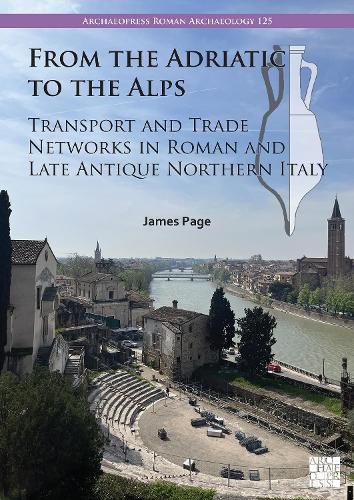Readings Newsletter
Become a Readings Member to make your shopping experience even easier.
Sign in or sign up for free!
You’re not far away from qualifying for FREE standard shipping within Australia
You’ve qualified for FREE standard shipping within Australia
The cart is loading…






During the Roman period, inland regions are often assumed to have been difficult to access, with imports and trade dropping off as distance from the coast increased. Long-distance maritime trade has been the subject of intensive study, but the complex dynamics that governed inland trade have not seen the same level of interest. Within this book, Northern Italy serves as a case study to explore the role transport cost and consumer choice played in the distribution of local and imported goods throughout inland regions. Using three contrasting, quantified datasets of amphorae, finewares, and marble (together forming the Material Data in Northern Italy (MADINI) dataset), chronological and spatial patterns in inland trade are analysed using aoristic analysis and hierarchical clustering. The results demonstrate that inland trade was far more complex than a simple regression of imports as distance from the coast increased. Clear zones of consumption across Northern Italy are seen in the distribution of the material data, often closely linked to transport costs. While the river network is shown to have been a crucial in facilitating inland transport, the significance of trans-mountain trade across the Alps and the Apennines has been underestimated. Areas furthest inland are often shown to have had the greatest diversity in the provenance and types of material, as opposed to coastal areas which demonstrate a more limited selection. The results highlight the diverse array of factors governing inland trade and the interplay between cost and choice in the decisions made by consumers.
$9.00 standard shipping within Australia
FREE standard shipping within Australia for orders over $100.00
Express & International shipping calculated at checkout
During the Roman period, inland regions are often assumed to have been difficult to access, with imports and trade dropping off as distance from the coast increased. Long-distance maritime trade has been the subject of intensive study, but the complex dynamics that governed inland trade have not seen the same level of interest. Within this book, Northern Italy serves as a case study to explore the role transport cost and consumer choice played in the distribution of local and imported goods throughout inland regions. Using three contrasting, quantified datasets of amphorae, finewares, and marble (together forming the Material Data in Northern Italy (MADINI) dataset), chronological and spatial patterns in inland trade are analysed using aoristic analysis and hierarchical clustering. The results demonstrate that inland trade was far more complex than a simple regression of imports as distance from the coast increased. Clear zones of consumption across Northern Italy are seen in the distribution of the material data, often closely linked to transport costs. While the river network is shown to have been a crucial in facilitating inland transport, the significance of trans-mountain trade across the Alps and the Apennines has been underestimated. Areas furthest inland are often shown to have had the greatest diversity in the provenance and types of material, as opposed to coastal areas which demonstrate a more limited selection. The results highlight the diverse array of factors governing inland trade and the interplay between cost and choice in the decisions made by consumers.